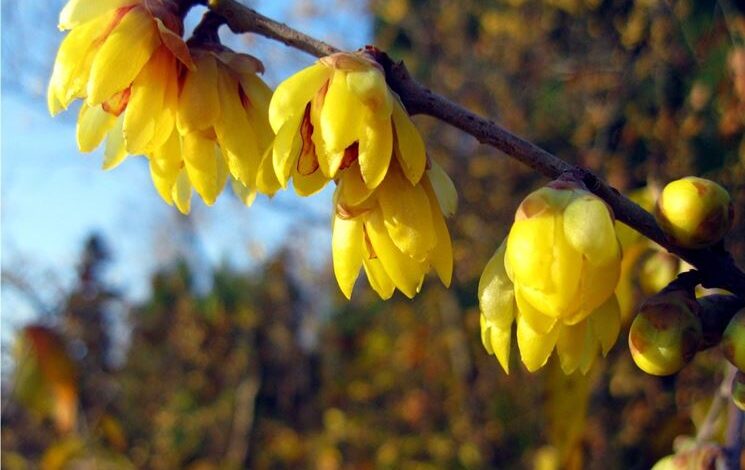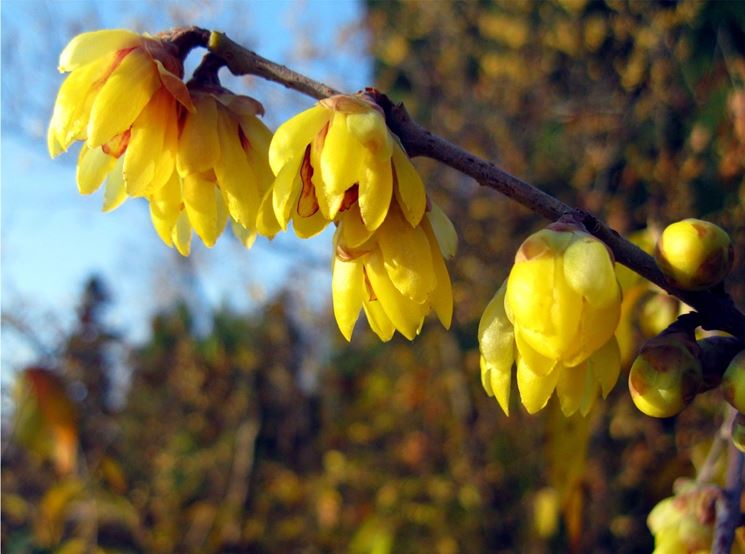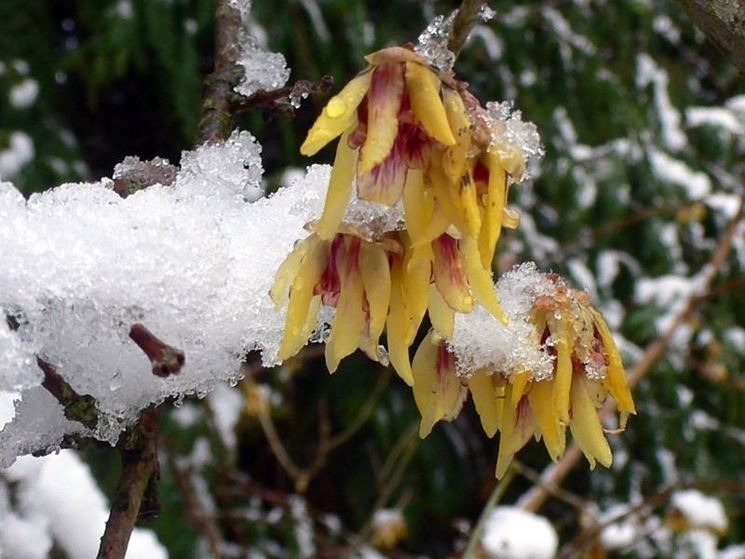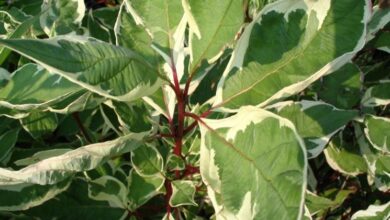Chimonanthus praecox

General information on chimonanthus praecox

The chimonanthus praecoxit is a particularly easy shrub to grow, therefore suitable even for the most inexperienced of gardeners. In fact, the most interesting feature of this plant is undoubtedly its strong rusticity: it is a shrub that has its habitat in winter forests, so it will be able to withstand even very rigid minimum temperatures, even around -20 °. C; despite this, it is still capable of withstanding the hot summers of our country. It needs a lot of light, so it will be necessary to place it in a well-lit place, making sure that the sun’s rays hit the plant directly: in fact, thanks to the remarkable resistance and adaptability of this extraordinary shrub, there is no need to fear that such exposure could damage leaves or other parts of the plant; in reverse,
The ease with which it is possible to cultivate calicanthus also depends on the fact that this plant has no particular needs in terms of substrate, adapting to both calcareous and clayey soils: in any case, it is possible to cultivate chimonanthus praecox in simple soil. garden. Fertilization must be carried out regularly, every month, using a common fertilizer for plants, as long as it is rich in microelements such as potassium and phosphorus. In autumn, since the calicanthus must strengthen roots and stem, it is advisable to use a low nitrogen fertilizer, so that the calicanthus is not defenseless in the cold, in case of development of new vegetation. Once settled in the ground, it does not need frequent watering, but is satisfied with rainwater.
Chimonanthus praecox: Pruning and multiplication of chimonanthus praecox
The ease with which it is possible to cultivate calicanthus also depends on the fact that this plant has no particular needs in terms of substrate, adapting to both calcareous and clayey soils: in any case, it is possible to cultivate chimonanthus praecox in simple soil. garden. Fertilization must be carried out regularly, every month, using a common fertilizer for plants, as long as it is rich in microelements such as potassium and phosphorus. In autumn, since the calicanthus must strengthen roots and stem, it is advisable to use a low nitrogen fertilizer, so that the calicanthus is not defenseless in the cold, in case of development of new vegetation. Once settled in the ground, it does not need frequent watering, but is satisfied with rainwater.
Chimonanthus praecox: Pruning and multiplication of chimonanthus praecox

In general, chimonanthus praecox does not require pruning, making its cultivation even easier. However, to preserve the ornamental aspect of the plant, it is possible to intervene by eliminating the dried leaves and the flowers that may have run out, so that they cannot serve as vehicles for parasites and for various diseases: in this sense it is also necessary to use well-sharpened tools and previously sterilized. Chimonanthus praecox can be easily reproduced by sowing: in spring, the seeds will have to be taken from the semi-woody capsules into which the flowers will be transformed in the meantime: at this point, they will be buried in a substrate of peat and sand, kept moist until at germination, after two years from which it will be possible to plant in the garden.




